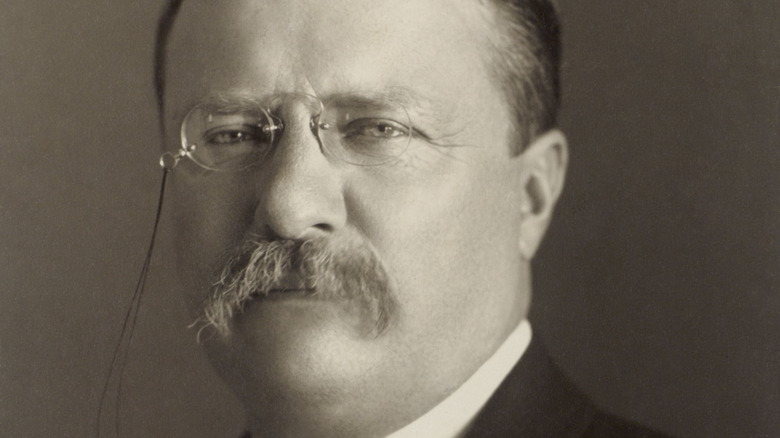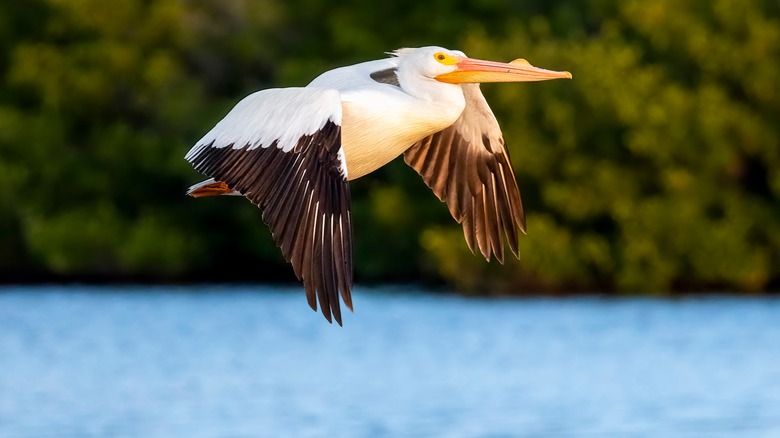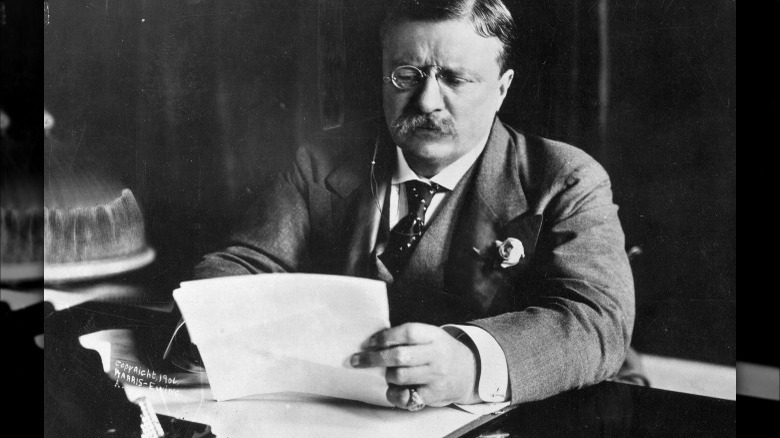Teddy Roosevelt's Forgotten Conservation Legacy For Birds
President Theodore "Teddy" Roosevelt became America's leader in the wake of a great tragedy, according to the official website for the White House. He stepped into the role after the assassination of President William McKinley. Known as an active reformer, Roosevelt was reluctant to be a vice president, considering the job to be mostly ceremonial, per Britannica. Prior to becoming McKinley's vice president, Roosevelt distinguished himself as the governor of New York and as the secretary of the U.S. Navy. He was also a war hero for his role in the Spanish-American War. Roosevelt commanded the First U.S. Volunteer Cavalry, also known as "The Rough Riders," and helped them achieve an important victory at the Battle of San Juan Hill (via Smithsonian).
In addition to being a skilled horseman, Roosevelt loved to hunt. Roosevelt seemed to prefer the wilds of nature over city life despite the fact that he was born into an affluent New York family in 1858. As president, Roosevelt became one of the country's leading protectors of natural wonders. He seemed to waste little time once he took office in 1901 to start his conservation work.
Roosevelt advocates for wildlife
Roosevelt is remembered partly for how he responded to the wildlife crisis that began to emerge at the end of the nineteenth century. According to the Pelican Island National Wildlife Refuge, hunters were causing havoc by indiscriminately shooting and killing animals. The bison population was nearly hunted to extinction, for example. Some bird species were also facing problems from poachers and hunters during this time as their feathers were in high demand for women's hats (via the Department of the Interior).
In Florida, members of the Florida Audubon Society and the American Ornithologist's Union were working to protect the birds there. Two bird advocates from the state brought the situation with the brown pelican to Roosevelt's attention. There was only one place left on the state's east coast where these birds congregated and raised their offspring, and their populations were in danger in Florida. And it was there that Roosevelt made conservation history in 1903.
Roosevelt made conservation history
On March 14, 1903, Roosevelt signed an executive order to make Florida's Pelican Island a protected area. This was originally labeled as a federal bird reservation and the first time the federal government specifically designated an area for animals only. It is considered the first national wildlife refuge in the country. Roosevelt continued to create more natural conservation spaces during his years in office, including nine in Florida. In all, he designated a total of 55 bird refuges and wildlife preserves, per the Pelican Island National Wildlife Refuge.
Roosevelt's conservation efforts continue to this day. The National Wildlife Refuge System now contains more than 560 sites which are managed by the U.S. Fish & Wildlife Service. And one of these preserves honors the larger-than-life president who helped launch the conservation movement. The natural world's great champion's name is on the Theodore Roosevelt Wildlife Refuge located in Hollandale, Mississippi.


